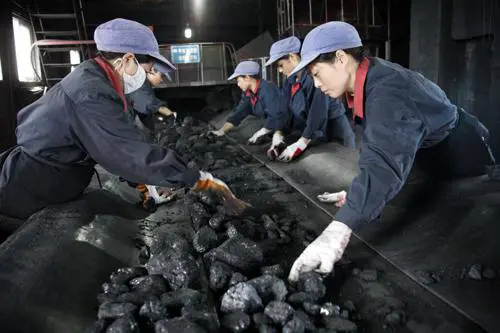Along with supply side reform of coal and steel industries since this year, a production reducing system of 276 working days has been strictly implemented for coal industry. Each coal type’s price greatly rebounds. What influence of reduced production and rebounded prices will have on coal enterprises?
Their revenue and net profit have generally declined year on year, but some stopped losses, according to successive semi-annual reports.
Although coal price increases, the overall industry is still at the bottom, greatly restricting the industrial performance, related researchers believed. Along with constantly- promoted supply side reform of coal industry in the second half year, coal price will possibly continue to rise, likely to improve the industrial profitability on the whole.
Cuts in both revenue and net profit cause troubles
China Shenhua Energy Company Limited (601088.SH), the largest Chinese coal enterprises, on August 27 announced its semi-annual report for 2016. Its revenue reached at 78.72 billion yuan for the first half year, down 10.32 percent year on year, with a net profit of 9.83 billion yuan belonging to its shareholders, down 18.6 percent year on year.
Although coal price rebounded in the first half year, it still declined year on year regarding to cuts in both revenue and net profit, China Shenhua Energy indicated. Its average coal price was 271 yuan per ton in the first half year, down 14.5 percent year on year, while the figure was 317 yuan per ton in the same period last year.
Its main businesses are diversified, including coal, power generation, coal chemical, and commodity trade. Due to reduced electricity price of the grid in 2015, its average electricity sales price was 306 yuan per megawatt hour in the first half year, down 10.5 percent year on year, while the figure was 342 yuan per megawatt hour for the same period of last year. Sales volume and price of its coal-to-olefin products declined, with commodity trade turnover also decreased.
Huolinhe Opencut Coal Industry Corporation Limited of Inner Mongolia (002128.SZ), having disclosed semi-annual performance earlier, also faces declines in both revenue and net profit. Its revenue was 2,409 million yuan for the first half year, down 8.12 percent year on year, with a net profit of 349 million yuan, down nearly 12 percent year on year. It also blames this on low coal price and reduced grid power price.
Except several companies, the coal enterprises have suffered revenue decline to different extent in the first half year, based on Wind data. Some believed that the rapid rebound of coal price in this period relied on reduced production, just playing a limited role in enhancing performances of coal enterprises.
Coal sales increased 4.8 percent year on year in the first half year, and domestic coal sales accounted for 10.1 percent of the total amount nationwide, semi-annual report of China Shenhua Energy shows. Coal price is commonly low, average sales price of domestic coal trade declined 66.4 percent year on year, and proportion of coal trade with over-high price greatly decreased, which all caused such situation. Up to the end of June, raw coal totaled at 21.60 million tons, down 10.15 percent year on year; commercial coal sales reached 21.44 million tons, 2.12 million tons more than the same period of last year with a growth of 10.97 percent year on year, semi-annual report of Opencut Coal Industry also shows.
Hidden hope
Generally declined performances also have a hidden hope. Referring to China Coal Energy Company Limited (601898.SH) ranking No.2 domestically, although its revenue for the first half year also declined, down 12 percent year on year, it provided a net profit of 620 million yuan for its parent company, while losses of 960 million yuan in the same period of last year.
Along with reinforced promotion for supply side reform of coal industry since this year, the coal price has constantly rebounded, expected to maintain at a high level in the second half year, coal industrial analyst at China Merchants Securities pointed out. As one of the leading enterprises, China Coal Energy may fully benefit from supply side reform, with its performance for the second half year likely to further improve.
In terms of Guizhou Panjiang Refined Coal Co., Ltd. (600395.SH) located in the southwest, its revenue for the first half year reached 1.54 billion yuan, down 22.4 percent year on year, with net profit of 80,000 yuan belonging to its parent company, down 99.6 percent year on year, which is disappointed. But based on quarters, it lost 106 million yuan in the first quarter, and stopped losses due to coal price rebound in the second quarter.
Supply side reform will be constantly intensified for the coal industry in the second half year based on recent comments on coal industry from related official of National Development and Reform Commission, as coal price rebound is not expected to largely resume the production, steam coal price is expected to rise another 50 yuan per ton, and constant rebound of coal price will further improve the performances of coal enterprises, according to ICIS coal industrial analyst.
Local regions are crazily scrambling for coking coal, steel coking enterprises in the downstream continue to supplement the inventory, coking coal price rapidly and constantly increases with bigger growth than steam coal, likely to benefit the coking coal magnates, the latest market report on metallurgical coal from Shanxi Fenwei Energy Consulting.
Additionally, semi-annual reports also reveal new plans of coal enterprises. For example, China Shenhua Energy proposes to establish Shenhua Guohua Guangdong Power Sales Co., Ltd. and Shenhua Guohua Comprehensive Energy Development Co., Ltd. on its own. Opencut Coal Industry stated in June to invest and establish Inner Mongolia Intelligent Energy Co., Ltd. under State Power Investment Corporation, going to step in comprehensive and intelligent energy and power sales businesses; it believed that this will benefit its expansion in new power utilization markets, and improve overall profitability.
 简体中文
简体中文

